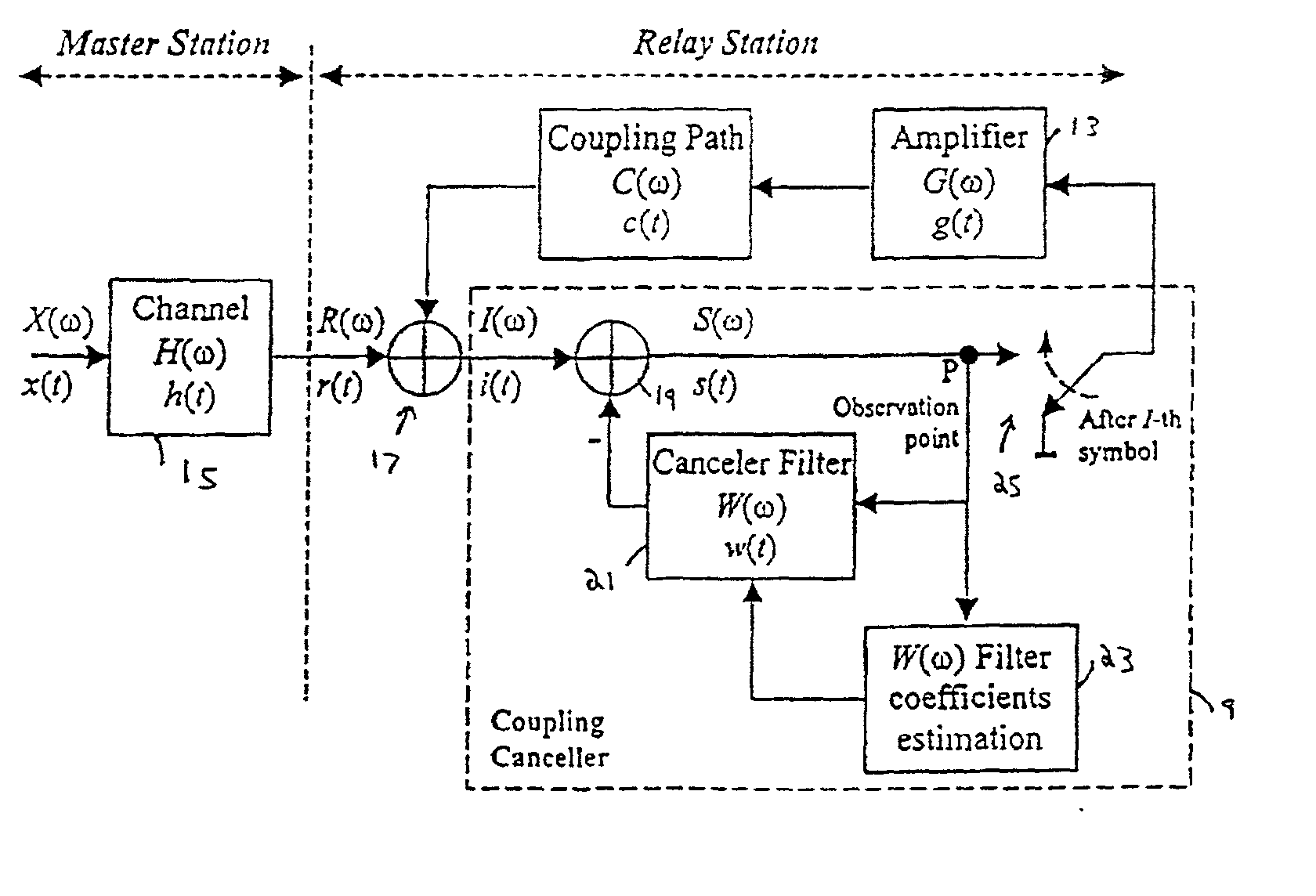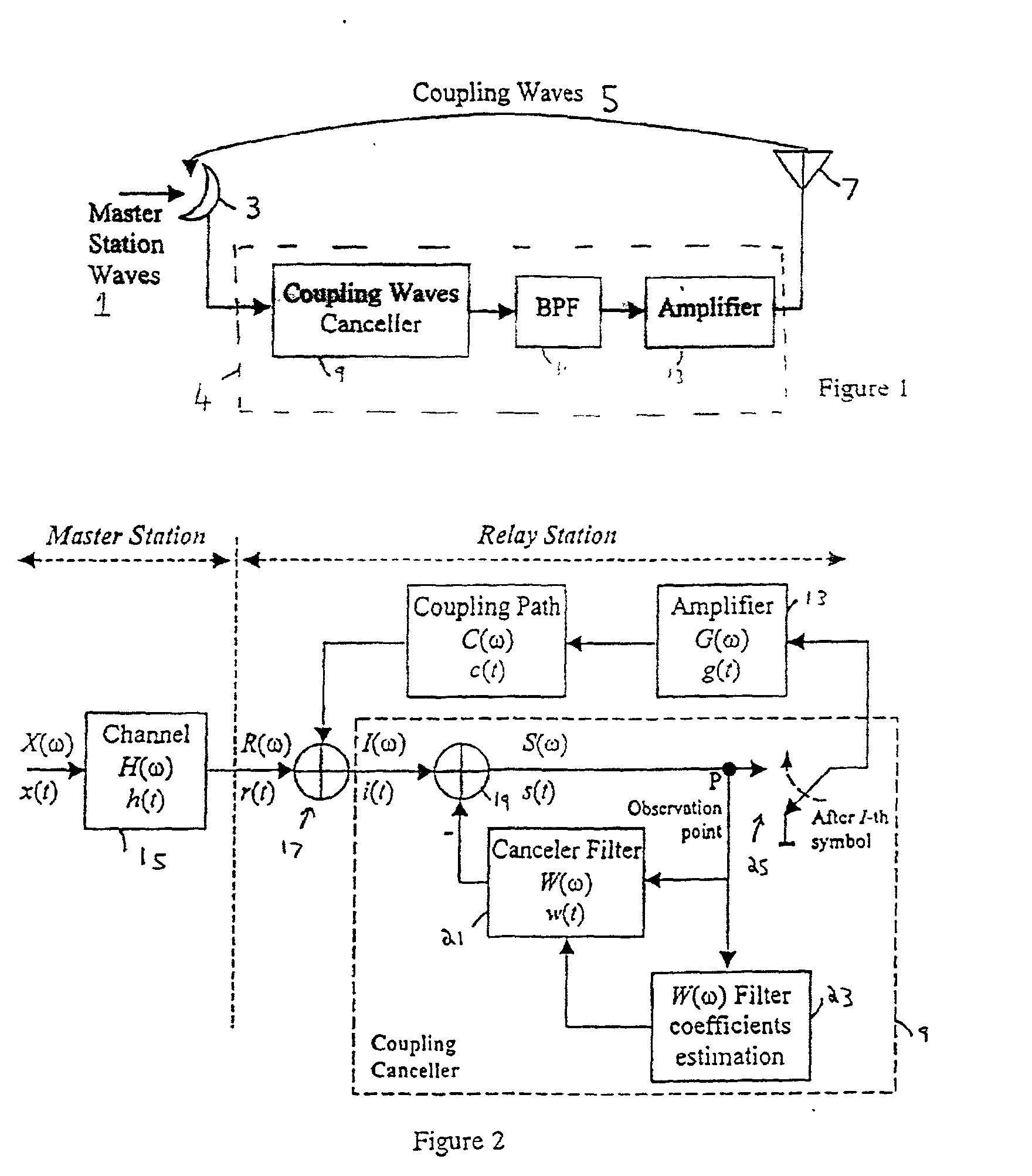Methods and apparatus for reducing signal degradation
a signal degradation and signal technology, applied in the field of methods and apparatus for reducing signal degradation, can solve the problems of divergence, inability to work well with conventional coupling cancellation units, and inability to meet the requirements of a repeater transmission environment, and achieve the effect of minimizing the estimated error
- Summary
- Abstract
- Description
- Claims
- Application Information
AI Technical Summary
Benefits of technology
Problems solved by technology
Method used
Image
Examples
Embodiment Construction
[0052] Like the conventional system discussed above, the present embodiment has the general structure illustrated in FIG. 1, but the coupling waves cancellation unit 9 is as illustrated in FIG. 2. The optional BPF 11 of FIG. 1 is omitted from FIG. 2 for simplicity. Likewise, FIG. 2 omits any A / D converter(s) in the system.
[0053] FIG. 2 shows the detail of the coupling wave cancellation unit and the principle of canceling coupling waves between the transmitting and receiving antennas of the broadcasting wave relay station. The master signal is x(t) (in the frequency domain X(.omega.)), which is subject to multipath interference h(t) (H(.omega.), in the frequency domain, is the multipath channel transfer function), in the channel 15 between the master station and the relay station, to produce a signal r(t) (R(.omega.) in the frequency domain).
[0054] The signal R((.omega.) from the master station is given by
R(.omega.)=X(.omega.).multidot.H(.omega.) (1)
[0055] A coupling wave is added to...
PUM
 Login to View More
Login to View More Abstract
Description
Claims
Application Information
 Login to View More
Login to View More - R&D
- Intellectual Property
- Life Sciences
- Materials
- Tech Scout
- Unparalleled Data Quality
- Higher Quality Content
- 60% Fewer Hallucinations
Browse by: Latest US Patents, China's latest patents, Technical Efficacy Thesaurus, Application Domain, Technology Topic, Popular Technical Reports.
© 2025 PatSnap. All rights reserved.Legal|Privacy policy|Modern Slavery Act Transparency Statement|Sitemap|About US| Contact US: help@patsnap.com



